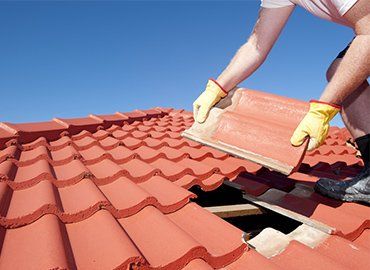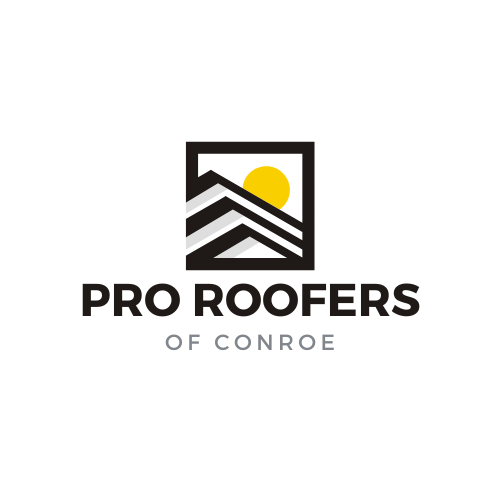Roofing Repair & Replacement

Roofing Design
5 Factors To Consider When Repairing Or Replacing A Roof
Here are some things to consider when deciding between a roof replacement and a roof repair.
The Age of the Roof: Do you know when was your current roof was installed? Depending on the type of roofing material used, its age may be a good guide of when it needs to be replaced. If your roof showing signs of aging and/or has experienced storm damage, leaks, or other issues, it may be time to replace it. Replacing an older, damaged roof, instead of having to repeatedly pay for roof repairs, is probably worth the investment regardless of whether you will stay in your home or plan to sell soon.
Roof Leaks: A leaking roof is the most common reason that homeowners need either roof repair or replacement. A key sign of a leak is water stains inside your home that run across ceilings or down your walls. Finding the source of the roof leak on your own can be tricky. However, a certified roofing contractor like Suncoast Roof Pros can help solve the mystery.
It’s important to solve a leaky roof problem as soon as possible. A small leak can quickly lead to bigger problems, such as:
- Mold
- Rotting framing and roof sheathing
- Damaged ceilings, and
- Wet or destroyed insulation
Roof Damage: Normally, if deciding between roof repair or replacement, your roof has either deteriorated in appearance and/or has suffered physical damage. Partnering with a trusted roofing contractor like Suncoast Roof Pros can help analyze roof damage so you can a decision that is right for both your home and budget. Indications of roof damage will vary between various types of roofing material but generally fall into two main categories:
Aesthetic damage:
- Roofing material looks old and worn
- Moss, dark streaks or algae is growing on or between the roofing materials
Structural damage:
- Warped or curled edges on asphalt or wood shingles
- Areas of missing granules or bald spots on asphalt shingles
- Cracked, broken, or missing asphalt, tile or wood shingles
- Damaged or pierced asphalt, tile, wood or metal roofing
- Severely rusted metal shingles or panels
Roof Replacement Costs: Usually, the expense of a new roof is one of the biggest considerations for homeowners when it comes to a reroof vs. repair decision. All things being equal, roofing repairs are going to cost less than a complete roof replacement project. That being said, if you end up paying for numerous repairs in a few years, the total repair cost will eventually exceed the cost of an entire roof replacement.
Suncoast Roof Pros can provide free estimates to help you in your analysis of what might be the most budget-conscious solution. This can certainly be done without putting your home at risk.
A complete roof replacement might be more expensive up-front, but it does ensure you won’t have to pay for successive repairs, or multiple trouble spots on your roof. Additionally, a completely new roof offers peace of mind, knowing that your home and its contents is protected from the elements.
When to get your roof repaired:
If You Have Minor Damage
If you require repair to a small portion of your roof or need to replace a couple of shingles in a localized area then replacing damaged material in that section can be relatively simple and inexpensive.
When you find damaged, torn, or missing asphalt shingles they can usually be replaced with new ones pretty easily. Other types of roof materials, such as metal roofing, may be more difficult or expensive to replace individually.
One disadvantage to conducting limited roof repair is in trying to match roofing materials so that the repaired area matches the rest of the roof. Another option is to ask your roofing contractor to order shingles that correspond to the existing color as much as possible.
If You Have Moderate Damage
If roof damage is more significant but still confined to one area of your roof, a partial re-roofing may be the best option. It’s likely to be less costly than a complete re-roofing.
Just as in the case above, a downside to partial re-roofing is aesthetics. It may be more difficult or even impossible to match the new roofing materials to the existing ones. With time, roofing materials fade due to exposure to the sun and weather. As such, the newly reroofed portion will look different from the rest of the roof.
When to Get a New Roof
Despite the upfront cost, a new roof may be less expensive in the long run, This is possible by avoiding the mounting costs of multiple repairs or additional damage over time.
New Roof Advantages:
- Looks and curb appeal: The roof typically makes up a large portion of your home’s appearance. A new roof looks attractive, and it gives you the opportunity to choose a new color/style of shingles.
- Energy efficiency: Newer roofing materials have improved over time by keeping out the elements and reflecting sunlight.
- Peace of mind: Knowing that the people and belongings in your home are protected from the elements.
If you’re weighing your options between a roof repair and a complete roof replacement, call Suncoast Roof Pros to help you decided based on experience.
Suncoast Roof Pros Available Roofing Materials
We work with a variety of roofing materials, each with its own set of characteristics, advantages, and disadvantages.
Asphalt Shingles:
- Widely used for residential roofing, asphalt shingles are cost-effective, easy to install, and come in a variety of styles and colors.
Metal Roofing:
- Metal roofing, including materials like aluminum, steel, and copper, is durable, lightweight, and energy-efficient. It is often chosen for its longevity and resistance to weather elements.
Wood Shingles and Shakes:
- Wood shingles and shakes provide a natural and aesthetically pleasing look. While cedar is a common wood choice, they may require more maintenance and have a shorter lifespan compared to some other materials.
Tile Roofing:
- Tiles can be made from clay, concrete, or slate. Tile roofing is known for its durability, energy efficiency, and distinctive appearance. It is commonly used in Mediterranean and Spanish-style architecture.
Slate Roofing:
- Slate is a natural stone material known for its longevity and elegant appearance. It is durable and resistant to fire and weather but can be heavier and more expensive than other options.
Concrete Roof Tiles:
- Concrete tiles offer a durable and versatile roofing solution. They come in various shapes, styles, and colors and are known for their resistance to fire and weather.
Synthetic Roofing Materials:
- Various synthetic materials, such as synthetic slate or rubber roofing, mimic the look of natural materials but often come with added durability and lower maintenance requirements.
Built-Up Roofing (BUR):
- BUR consists of multiple layers of bitumen and reinforcing fabrics. It is commonly used in flat or low-slope roofs and provides excellent waterproofing.
Modified Bitumen Roofing:
- Modified bitumen roofing is an evolution of traditional BUR, using polymer-modified bitumen for added flexibility and durability. It is often applied in layers with a torch-down method.
Solar Tiles:
- Solar tiles or solar shingles integrate solar cells into roofing materials, allowing for the generation of electricity from sunlight while maintaining a traditional appearance.
Membrane Roofing (EPDM, TPO, PVC):
- Single-ply membrane roofing materials, such as EPDM (ethylene propylene diene terpolymer), TPO (thermoplastic olefin), and PVC (polyvinyl chloride), are popular for flat roofs due to their flexibility, durability, and reflective properties.
When choosing a roofing material, we consider factors such as climate, local building codes, budget, and aesthetic attributes. Consulting with Suncoast Roof Pros will help you make an informed decision based on your specific needs and preferences.
